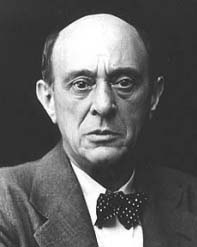Friede auf Erden
(S.Balestracci, I.Pizzetti, K.Weill, A.Schönberg)

Friede auf Erden
Pace nel mondo con la musica
- “Un albero verde” a 4 voci su testo di Scipio Slataper (1915)
- “Messa da requiem” (1922)
- “Die Legende vom toten Soldaten” a 4 voci su testo di Bertolt Brecht (1922)
- “Friede auf Erden” op. 13 a 8 voci su testo di Conrad Ferdinand Meyer (1907)
The programme of this concert aims at taking to the audience some of the most relevant choir pages from the contemporary and XX century repertoire, with the specific purpose of celebrating the mankind reconciliation and the condemnation of any war.
The short sketch opening the concert is dedicated to peace, for the triumph of which the time is ripe, despite what the world has witnessed throughout the last hundred years, which seems to have taught anything to the greedy and dull human selfishness. This short piece comes from a quotation of the warfare diary of Scipio Slataper, from Trieste, died during the conflict; here, the appalling description of distruction is faded in the heartfelt perspective of the nature and the landscape, disfigured by the senselessness of mankind.
The terrible years of the first world war were just passed as Pizzetti composed his famous Requiem. Within an ideal path of peace, this composition aims at stimulting a reflection on the theme of human life vulnerability, often threatened by the blind and violent aggressiveness.
This piece belongs to the Florence period of the Master, and is linked to several aspects of the liturgical tradition, represented under a late romantic sensitivity: the voices imitation (Requiem), the citation of cantus firmus (Dies Irae), the poli-choral structure (Sanctus), the isorythmic aspect (Libera Me), all framed in a novel freedom in the treatment of dissonance and metres.
The work has earned quite a success in the repertoire of various choral groups, owing to a natural easiness in the singing of the vocal weave.
The piece by Kurt Weill is a relevant example of his collaboration with Brecht, lasted from 1927 to 1930, that took to a renewal of the musical theatre not only in Germany. The mutual function of text and music, the adoption of important civil topics, the non-academic approach to the music, the aim at reaching a wider audience by the contamination with lighter forms such as cabaret, are all visible in this choral piece, too, in which the music is composed on a text written by Brecht by the end of the Great War: here is the private sent to die a second time in the rethorical and guilty indifference of politicians, military apparatuses, dull and unaware crowds. The form of isorythmic ballad adds further drama to this representation of the man forced to kill against his will.
Finally, the piece by Schoenberg, addressed to the Wien Singverein, was intended as an a cappella one, but due to the difficulties met during the rehersal, an orchestral integration was subsequently added, and only on December the 9th, 1911, the piece could be played, along with an instrumental support constantly kept on a faint dynamic by the director Franz Schreker, to leave the correct emphasis to the two hundreds choristers then performing: in the aim of the author, the orchestral support should have been used only for that first performance, to help the singers. The text by the poet Conrad Ferdinand Meyer, from Zurich, starts from a christmas framework to celebrate the peace, whose arrival on earth is hoped for the future generations as an ideal and longlasting dimension. The very same alternation of consonances and dissonances, of omophonic and polyphonic sections, correspond in Schoenberg composition to the dialectics between the ideal tension towards peace and the discord of the real world with its conflicts; even the oscillation between major and minor keys contributes to provide the sense of the polarity between heaven and earth, God design and human violence.
